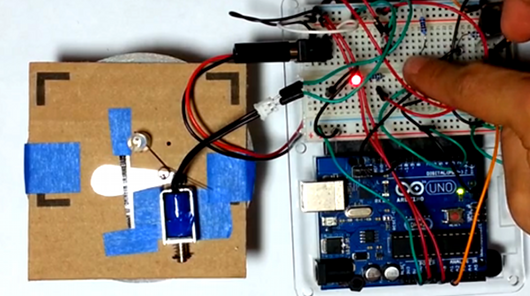[Kevin] has made an interesting camera shutter mechanism using an Arduino and a solenoid. To keep it extremely simple, he is only controlling a single leaf. In the linked video, you can see him take it through its paces from 1/125 seconds up to infinite. This is, of course, a proof of concept, and [Kevin] mentions using smaller components to make everything fit easily inside a Holga-like body. As he points out in the video’s comments, digitally controlling the flash would be a simple matter as well.
A basic camera is incredibly simple to make, and [Kevin’s] design certainly isn’t complicated. That said, if you look at the big picture, [Kevin] is demonstrating how feasible it could be to build an entirely custom camera with a standard microcontroller as the brain. We can’t help but think of all of the possibilities when you are able to control the entire photo taking process.
Interestingly, [Kevin] is also behind this twin lens reflex Kickstarter project from earlier in the year. It will be interesting to see what other camera-related hacks we will see from him.
















That’s neat!
My only question would it make a difference, especially at higher speeds, that the top part of the film gets a longer exposure because of the way the shutter opens and closes?
Absolutely. SLR shutters use a sliding system to avoid this so that while theoretically different parts of the image are from different moments, the geometry keeps equal exposure. Still, many quick shot cameras of the past used a single leaf shutter. There would also be aberration effects as the shutter acts as a momentary aperture. Then again, if the geometry were well known, I suppose a really clever designer could at least partially compensate for such things in post processing.
It depends a lot on where the shutter is placed. Ideally, it should be inside the lens assembly, where the light beam is narrow, and the uneven lighting effect is minimized.
The further away from this point, the worse the effect will be.
Very cool! We need to do something very similar. Would it be possible to get this project as a DIY? What materials would be needed? Maybe some general instructions? Thanks!